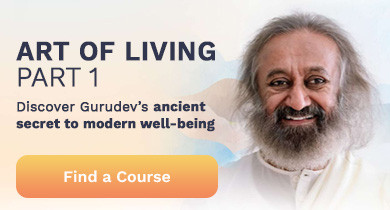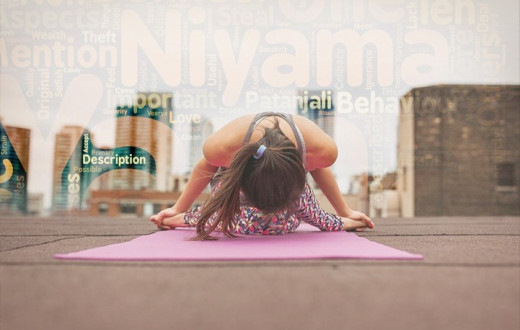By Elizabeth Herman | Posted: October 10, 2019
How can you gain a sense of balance in life? One way is practicing yoga postures, or asanas, in a way that distributes your energy evenly among needed ways of being.
In yoga, there’s a balance among complementary elements of human life. Passion, dispassion, and compassion work together to create health in the necessary areas of work, rest, and relationships.
Yoga postures for each of these aspects can be placed in a yoga routine that will help stabilize your mind and body every time you practice it. It will produce a sense that your life encompasses everything evenly and skillfully. The poses complement each other and when you practice them, you can visualize yourself with a happy combination of all human essences.
Yoga as an expression of the circle of life
About his passion for non-violence, upon returning from five weeks in India, Dr. Martin Luther King wrote “I left India more convinced than ever before that the method of nonviolent resistance is the most potent weapon available to people in their struggle for freedom and human dignity. As a result of my visit, my understanding of non-violence is greater and my commitment deeper.” Passion requires commitment and produces dynamic action.
About dispassion, Rajita Kulkarni Bagga, president of Sri Sri University and a leader in the World Forum for Ethics in Business, says she has “learned to be dispassionate, meaning at the end of the day you have to be able to let go and relax. Gurudev Sri Sri Ravi Shankar, founder of the Art of Living, says that ambition should be a shirt you wear, not your skin. You need to remove it. It’s only because of meditation that I can let go from time to time. We’re all dispassionate, in a way, because we all sleep at night.” Dispassion renews your energy reserves so you can let go, rest and move on effectively.
About her experience of compassion as a young disaster relief volunteer, Marilyn Galan writes, “Before long, a tornado roared through a nearby town. I held hands with families affected by the tornado, helping them fill in paperwork. At times I would gently take the pen out of their shaking hands, to write down phone numbers and addresses that were now home to shards and damaged buildings. It was a small moment, but what a groundbreaking moment for me as a 15-year old! I realized I was helping these families take a first step toward recovery.” Compassion brings you in touch with other people, spreading positive energy throughout the world.
Dynamic, relaxing, and kind yoga postures
Dynamism and passion:
Superhuman pose (viparita shalabhasana)
Mill churning pose (chakki chalasana)
Boat pose (naukasana)
Relaxation and dispassion:
Crocodile pose (makarasana)
Child pose (shishu asana)
Corpse pose (savasana)
Kindness and compassion:
Cobra pose (bhujangasana)
Cradle pose (hindolasana)
Fish pose (matsyasana)
A balanced, 3 part sequence of 9 postures
To perform as a complete sequence using a well-balanced combination of passion, compassion, and dispassion, start with the 3 sitting poses, then 3 lying on belly poses, and then 3 lying on back poses.
Here are the poses in order for actual completion as just described:
Cradle pose (compassion)
Nurture yourself and your legs with the compassionate movements of cradle pose, rewarding your hard working knees like they’re your babies. Be sure to kiss your knees and sing them a soft lullaby.
Mill churning pose (passion)
Sitting with your legs out in front of you at an angle, move through the passionate mill churning pose, stimulating and massaging your liver and other internal organs.
Child pose (dispassion)
Retreat into the dispassionate child pose, sitting on your knees with your head down, arms at your sides on the floor.
Superhuman pose (passion)
From child pose, push your upper body forward to lie down on the belly, go into the dynamic superman pose, lifting arms and legs using all the muscles of the back to fly through the sky.
Cobra pose (compassion)
Then take the kindness of cobra pose, arching your back, looking up, shoulders down, hands under shoulders on floor, uplifting the lowliest of animals.
Crocodile pose (dispassion)
Relax in crocodile pose, right knee slightly pointing to the right side, head turning to the right and leaning on your bent arms as a pillow.
Boat pose (passion)
Turning onto the back, lift legs and torso into the energetic boat pose. If you choose to go further, you can do strengthening abdominal crunches as variations on boat.
Fish pose (compassion)
Follow with the kindness of the heart-opening fish pose, hands flat on floor under hips, arching your back, lifting your chest, gently resting the top of your head on the floor.
Corpse pose (dispassion)
The ultimate rest of corpse pose, lying on your back, eyes closed, head and feet on the floor, palms facing the ceiling, tensing and then releasing into blissful repose.
I hope you enjoy the circle of life as expressed through these yoga postures. To know more, find a Sri Sri Yoga course near you, and live with a balance of passion, compassion and dispassion every day!
While a regular yoga practice can result in improved health, it is not a substitute for medical treatment. It is important to learn and practice yoga under the supervision of a trained teacher. In the case of a medical condition, practice yoga after consulting a doctor. Do you need information on courses? Contact us at programs@us.artofliving.org to find a Sri Sri Yoga course at the Art of Living Center near you.
Elizabeth Herman writes, offers writing support to clients, teaches, and volunteers for a better world. She has a PhD in Rhetoric, Composition and Literature.





























